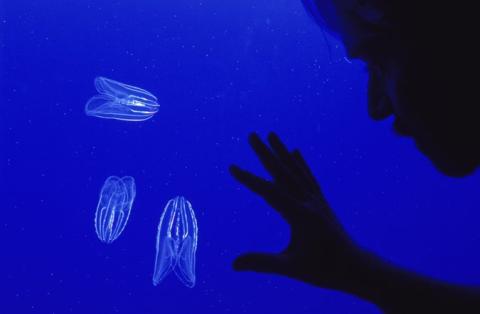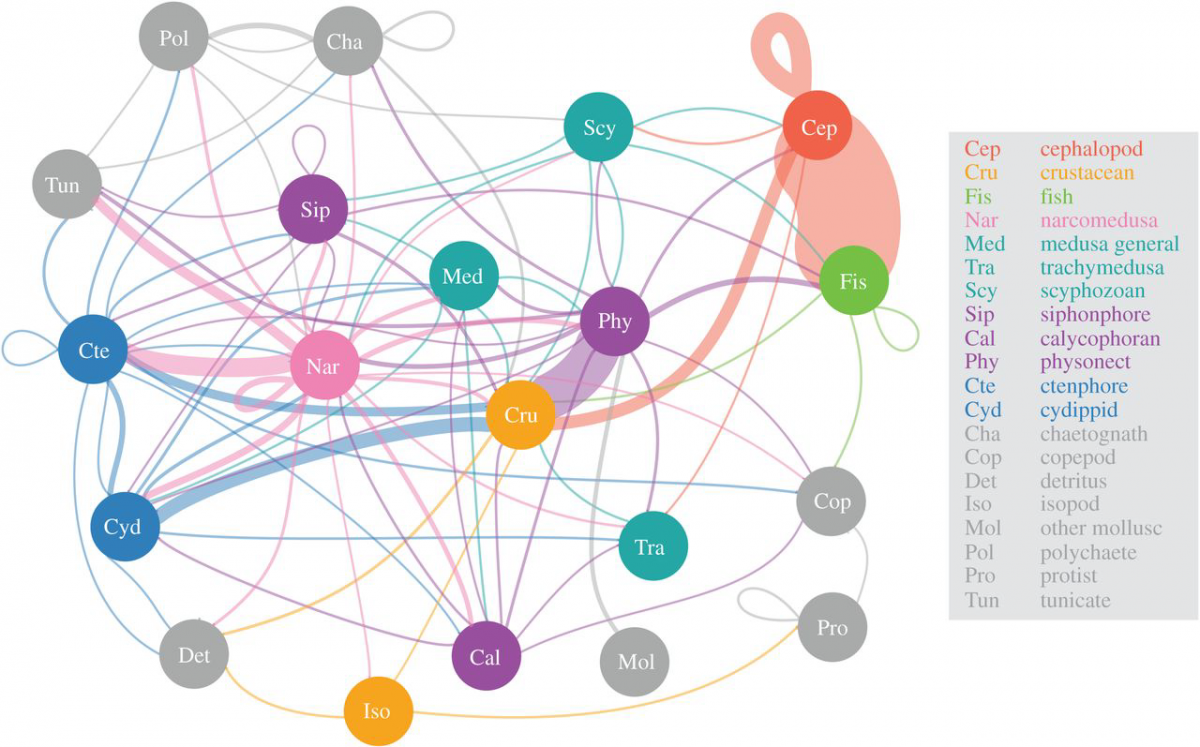
Imagine a 13-year old riding the bus to the ocean with his Scuba gear. That was Steve Haddock, who grew up in Southern California, where he explored tidepools, the beach, and the ocean. But he didn’t really think his love of the ocean would lead to a viable career, so Steve went to engineering college. Once there, he was bored and started taking biology classes. It was an influential teacher in college who steered him to graduate school. Steve’s advisors who studied bioluminescence and the deep sea opened the door for him to follow his passion as a marine scientist.
At the Monterey Bay Aquarium Research Institute (MBARI) Steve does research that takes him into the deep sea to study gelatinous creatures and how they have adapted to life in the deep. He’s especially interested in bioluminescence, the ”living light” that a lot of marine animals make. A recent paper he co-authored found that three quarters of animals in the water column are bioluminescent The Remotely Operated Vehicle (ROV) that Steve uses has a new camera that can actually film bioluminescence in action. He and other scientists can now observe how the animals use their light. The animals use bioluminescence for both offense and defense. Defense functions include: startling a predator, distracting a predator, and a “burglar alarm” to warn others. Offense functions include: a lure to attract prey, stunning or confusing prey, and illuminating prey. This website, which Steve helped create and manages explains these uses and more about bioluminescence: http://biolum.eemb.ucsb.edu/organism/photo.html
For Steve, one of the most exciting things about working at MBARI is the database of all the photo and video observations recorded over 27 years. He analyzes the ROV images to get new insight into what’s happening in the deep ocean. Steve and his colleagues looked at 350,000 records in the MBARI database to identify bioluminescence. And he analyzed the entire database of millions of individual organism sightings to find 740 food web interactions and created a visualization to show how elaborate and intertwined those interactions are. His passion for understanding animals of the deep sea has led him beyond observation to trying to unravel the evolution, genetics and chemistry of life at depths.
Read more: http://www.mbari.org/new-study-shows-that-three-quarters-of-deep-sea-animals-make-their-own-light/
http://www.mbari.org/science/midwater-research/zooplankton-biodiversity/















